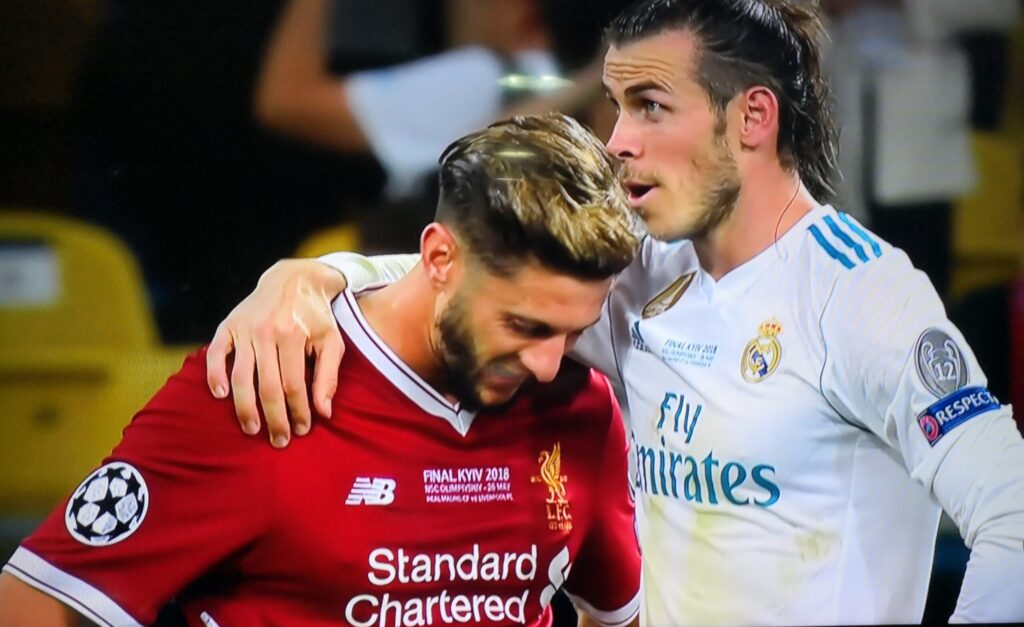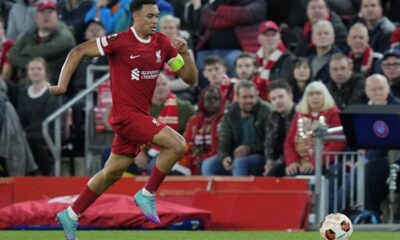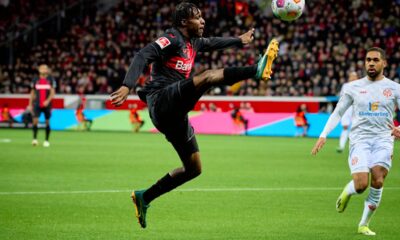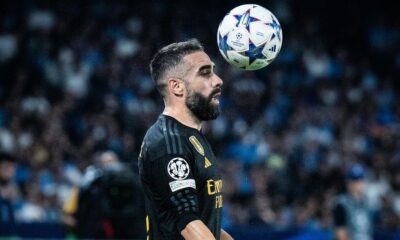Champions League
Tactical analysis of Real Madrid and Liverpool ahead of the LM final: where do the teams threaten and where do they have weaknesses?
Real Madrid vs. Liverpool. Champions League final. The biggest game on the club scene, the two best teams of the year. The Spanish team wants to win its 14th Champions League trophy, Liverpool is fighting for the sixth. A tactical analysis of both teams.

Real Madrid vs. Liverpool. Champions League final. The biggest game on the club scene, the two best teams of the year. The Spanish team wants to win its 14th Champions League trophy, Liverpool is fighting for the sixth. A tactical analysis of both teams.
Liverpool have a fantastically sophisticated pressing system that has been in their DNA for 7 years, since the arrival of the “master of pressing” Jürgen Klopp. That’s not entirely good news for Real Madrid, because for all its undeniable qualities, it’s not the same team it was in 2016-2018, when it deliberately let opponents find each other and then, thanks to the genius of Kroos, Marcelo and Isco, rode out the pressing into open defences.
Since the 2018 final, Real Madrid have been knocked out of the Champions League by high-pressing teams such as Ajax (2019), Manchester City (2020) and Chelsea (2021). This season, Los Blancos have also struggled quite a bit with high-pressing opponents, but they eventually made it to the final.
Liverpool’s pressing
Liverpool have had 632 pressing attempts in the Champions League, the most of any team in the competition. The Reds like to defend high and try to win the ball immediately in the attacking half so that the opponent cannot attack themselves, which could be lethal given the high profile flank defenders.
Liverpool start in a 4-3-3 formation, when in possession of the ball the formation changes to a 2-1-4-3 with the stoppers holding the half of the pitch and the wing backs just under the wings. While Liverpool are great at pressing, they are probably the best in the world at repressing. Until sometimes it looks like Salah and co. sometimes deliberately lose the ball so they can get it back immediately.
Take Liverpool’s game against Tottenham as an example. When the Reds were in possession of the ball, Conte’s charges, thanks to solid defending, didn’t let the opponents have any chances, so Liverpool resorted to centres into the box to Mané, who was very well covered and didn’t have many chances to assert himself.
But every time Spurs got the ball in their own half, that’s where the trouble came. For getting out of the Reds’ repression is an extremely difficult task, for as soon as a Spurs player punched the ball out, several Liverpool players immediately ran up to him and recovered the ball. This allowed the Reds to get the ball in dangerous areas and opened the door for the offense.
But this match, where Liverpool had a clear advantage, ended 1-1. Spurs created virtually the only opportunity, which they converted. Tottenham were able to use the space behind Liverpool’s outstretched backs effectively, something that could have been done by Real Madrid, whose wingers and especially Vinícius are lethal.
Corner kicks
Another key moment will be corner kicks, especially Liverpool’s. It’s no secret that Real Madrid have had huge problems defending corners this season. On the other hand, the Reds rely on them a lot thanks to great headers (Van Dijk, Konaté, Fabinho) and great enforcers (TAA, Robertson).
Los Blancos often leave players free in the penalty area not only at corners but also at centres, so they score most often in the season from these situations. They can’t afford to do that in the final because it would be deadly for the defence.
Salah vs. Mendy
The duel between Mohamed Salah and Ferland Mendy will also be a key duel. The Egyptian winger is Liverpool’s most dangerous player, but fortunately for Real, Mendy is one of the best left backs in the world in terms of defending. Offensively he’s been worse, but at the back he’s been a wall. Quick, strong, great anticipation and almost invincible in one-on-one duels.
But Salah will be assisted by Alexander-Arnold and that could be a big problem. Vinícius often stays in the middle of the pitch and doesn’t get involved in defending. Mendy has to be helped from the middle of the park not only by Toni Kroos, but also by stopper David Alaba.
Salah is almost always wanted by his teammates. In this year’s Champions League, he has already received 114 progressive passes, more than any other player. On the other side of the pitch, the duel between Vinícius and Trent Alexander-Arnold will be crucial, which we wrote about in more detail here.
The strength of the bench
Real Madrid regularly dominate late in games, which is part of the reason we’ve seen amazing comebacks against PSG, Chelsea and Manchester City. After all, coach Klopp himself stated this in his press conference. “If you look at the last minutes of Real’s games, they are unbeatable,” he said.
This is all possible thanks to the energy that flows onto the pitch from the bench. Most of the time it is the two youngsters, Eduardo Camavinga and Rodrygo, who get the game going and take the reins into their own hands. With the arrival of these players, but also, for example, Lucas Vazquez, the players on the pitch catch their second wind and the White Ballet start to dominate.
Carlo Ancelotti himself is already thinking ahead like this and relying on Plan B. “I’m clear about the line-up, we just have to think about which players we want to start the game from the beginning and which players will finish it,” said the Italian coach.
We can add one very interesting statistic. If Camavinga was not on the pitch in the Champions League knockout stage, Real’s overall score is 5::8. However, if the energetic Frenchman was on the pitch, the score for Real Madrid is 10:2! That’s how much influence and contribution a freshly 19-year-old youngster has on the game of the royal club. Can Real Madrid, with the strength of the bench, break the match again?
Source: Managing Madrid, Twitter












